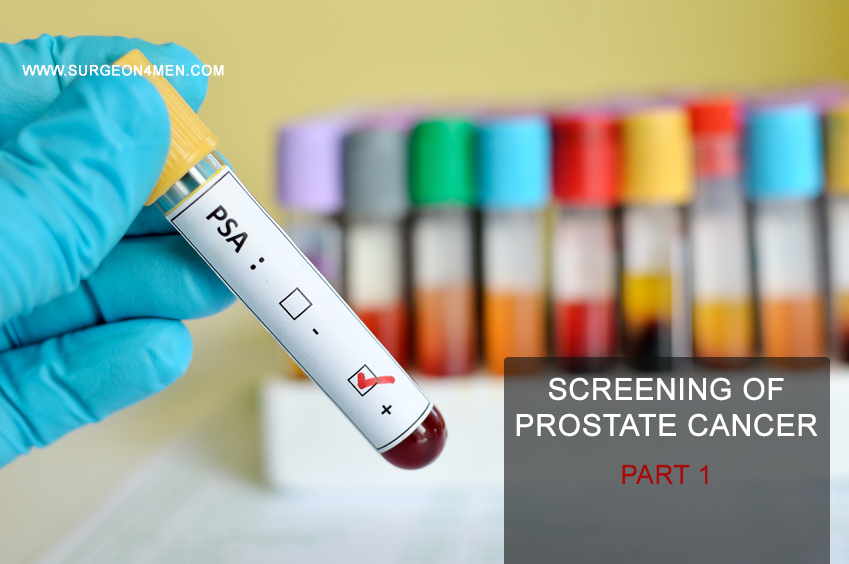Screening of Prostate Cancer
What are key Screening tests for Prostate Cancer?
According to the recommendations of the American Cancer Society (2), following screening tests are highly relevant in the early diagnosis of prostate cancer. It is very important for individuals to make informed decisions based on their family history, personal history and advice by the healthcare professionals. Ideally, screening for prostate cancer should be commenced annually at 50 years of age; however, depending upon the family or genetic history, the screening can be initiated before 50 years of age (3).
Most statistically significant tests include:
I. Digital Rectal Exam: In DRE, doctors follow the simple procedure of palpating the margins or edges of the prostate gland via per rectal approach.
In DRE, your doctor introduces a lubricated finger into the rectum to feel any irregularity or nodularity in the texture of the gland. There are a number of reasons why this test is relevant.
- DRE is a non-invasive and cost-effective method of identifying prostate malignancy or abnormalities.
- Other less invasive tests like PSA are not always specific or sensitive (for example, it is likely to have a normal PSA level with prostate cancer).
According to the study reported in the Archives of Clinical and Experimental Surgery (4), investigators suggested that DRE alone has a sensitivity of 60% in the detection of prostate malignancy. Additionally it is 92.5% specific and has a positive predictive value of 80%.
II. Prostate Specific Antigen Test:
In this test, your doctors assess the serum levels of PSA (Prostate specific antigen) – a normal protein secreted by the glandular tissue. The concentration or serum levels of PSA increases with advancing age (hence age of the patient should be considered while analyzing the results).
The procedure involves extraction of your blood sample; followed by biochemical analysis. It is imperative to mention that high PSA levels are not always suggestive of prostate cancer, but significantly high levels are often times the only (or first) indication of underlying pathology.
The normal serum concentration of PSA in an adult male is usually under 4 nanograms per milliliter (ng/mL). A serum concentration between 4 and 10 nanograms per milliliter (ng/mL) is indicative of prostate malignancy in 25% cases; whereas serum levels of 10 nanograms per milliliter (ng/mL) or higher are associated with 50% risk of prostate tumor.
Some benefits of conducting PSA test are:
- Prognostic value: Very high levels are often associated with worse prognosis.
- Response to therapy: Doctors perform serial testing of PSA to see the response to the therapy.
- Assessing the risk of recurrence: Rising PSA levels after primary treatment are suggestive of recurrence of prostate cancer or metastasis.
The sensitivity and specificity of PSA test is 85% and 72.5% respectively (at a cut-off serum level of 10 nanograms per milliliter (ng/mL)
Read more about prostate cancer screening and PSA in the upcoming blog post.

